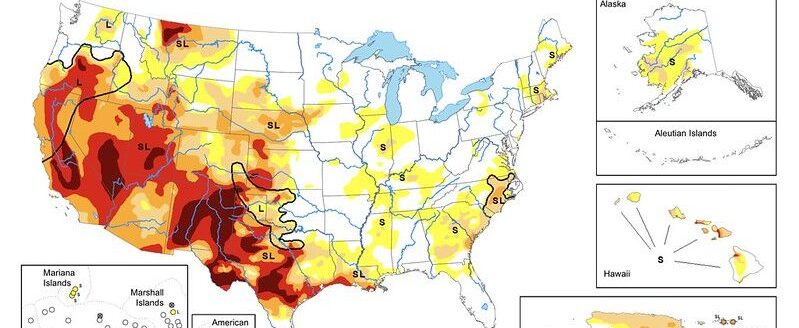Mother Nature has much to say about soybean yield and grain quality almost every year, says University of Missouri Extension soybean specialist Bill Wiebold. This year was no exception.
Several important soybean-growing regions in Missouri experienced severe drought this year. The most worrisome effect from drought is yield loss, but producers face several other effects during harvest, Wiebold says.
“Although summer was dry, fall turned quite wet in some of the same regions,” he says. “This wet weather can also effect harvest in ways other than delays.”
Smaller seeds
Drought during seed fill decreases seed size. These small seeds differ little from normal seeds in quality, composition and appearance, Wiebold says. Elevators should accept them. Adjust combines to keep harvest loss of small seeds to a minimum.
Drought can be severe enough to kill soybean plants. Seeds remain green when plant death occurs before maturity. The green may fade during storage, but not always. Elevators dock these seeds. For more information, download “United States Standards for Soybeans” at gipsa.usda.gov/fgis/standards/810soybean.pdf.
Green stems
Drought-stressed soybean plants may not mature normally. Stems remain green even though pods and seeds have matured. Sometimes leaves die but remain on the plant.
“When this happens, we may wait too long to harvest,” Wiebold says. “We assume that the pods are not mature if we see green stems. Harvesting soybean plants with green stems is difficult and slows harvest, but delaying harvest will increase pod shattering and yield loss.”
Weak pods and shattering
Soybean pods are made of two halves. On wild soybean, the pods easily split to disseminate seeds, Wiebold says.
Soybean breeders select against shattering and normally the two halves of soybean pods are held strongly together. They rupture only during harvest or if plants are left in the field long after maturity, he says.
Drought stress can weaken the sutures that hold the halves together. This increases the possibility of shattering, especially if seeds swell and shrink during repeated cycles of wetting and drying.
The soybean pod wall reaches almost full length before seed growth begins. Drought stress during pod wall growth can result in thinner pod walls that are prone to breakage. This happens less often than shattering from split pods. Tears in the pod wall usually are too small to allow seeds to fall, but they can let water into the pod.
Sprouted seeds
Pod walls usually prevent soybean seeds from absorbing water, Wiebold says.
“Unfortunately, the current spell of frequent rains, drizzle and/or foggy days and nights can bathe the soybean pod in enough water that the water soaks through the pod wall and wets the soybean seed.”
This can result in seed sprouting while still in the pod. For more information, see Wiebold’s article “Wet Weather Can Cause Seeds to Sprout on the Plant” from the September 2016 Integrated Pest & Crop Management newsletter at ipm.missouri.edu/IPCM/?ID=645.
Sprouting rapidly decreases seed quality and results in docking at the point of sale. Grain with sprouted seeds is difficult to store safely. Sprouted seeds release compounds that speed fungal growth. Harvest timely and make sure grain is dry to stop sprouting.
Poor grain quality
Seeds on plants killed by drought before maturity may be more susceptible to fungal invasion. Tears in pods, either within the pod wall or at the bottom suture, let water into the pod. If water can enter the pod, so can fungi.
“The combination of water and fungi result in fungal growth,” says Wiebold. “This growth may produce toxins, but mostly it reduces grain quality.”
U.S. standards for soybean set the upper limit for damaged kernels (it uses this term for seeds) in No. 2 soybean at 3 percent. If damaged kernels exceed 8 percent, the grain lot will be graded sample. Sample-grade lots are hard to sell and there are few uses for them near most communities.
Timely harvest may decrease the amount of damaged seeds, but some damage happens well before harvest. Scout the field to find and isolate pockets of damage so the better-appearing grain is not contaminated.
This is not easy and takes time, Wiebold says. It may, however, prevent grain from being rejected at market and is worth it.
Storing damaged grain also is difficult because fungal growth may continue and the integrity of the seed coat has been broken. Quickly bring moisture of grain lots with damaged seeds below 13 percent. “Be careful not to raise grain moisture by aerating with humid air,” Wiebold says. “Carefully watch stored grain for signs of heating.”

